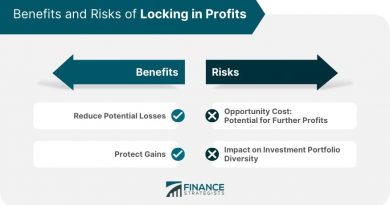What Is a Clearing Price in Securities Products Services

Clearing price is the monetary value of a traded security, asset, or good. It’s determined by the bid-ask process of buyers and sellers or by the interaction of supply and demand forces. Clearing prices are most stable in a liquid market. In illiquid markets, it may take longer for prices to reach equilibrium.
Key Takeaways:
– In microeconomics, the clearing price refers to the point where supply and demand are in equilibrium. It’s also known as the equilibrium price.
– In a free market, the clearing price is reached through price discovery as buyers and sellers attempt to find the most beneficial price.
– In securities markets, the clearing price is reached through the bid-ask process on the market order books.
– Liquid markets reach equilibrium quickly, while illiquid or thinly traded markets are more likely to face volatility.
– Some goods have sticky prices, meaning they respond slowly to changing market dynamics.
How a Clearing Price Works:
In any exchange, sellers want the highest price possible, while buyers desire the lowest purchase price possible. At some point, a mutually agreeable price is reached between buyers and sellers. This is when the market has "cleared" and a transaction has taken place.
Supply and demand are key elements of the bid-ask process. The clearing price of a security or asset is the price at which it was most recently traded. In an actively traded market, price discovery can be quick, especially when bid-ask quotes are continuously updated in real-time. For illiquid or thinly traded securities, it takes longer to find a stable clearing price.
Special Considerations:
For products or services, the market-clearing price is primarily determined by the interplay of supply and demand. The intersection of the demand curve and supply curve represents the equilibrium price.
Take a high-end smartphone, for example. If the manufacturer sets the price too high, a surplus will develop. If it sets the price too low, demand may exceed supply. In either case, an adjustment process will take place to find the clearing price for the smartphone.
Price Stickiness:
Clearing prices may not immediately respond to changing market conditions. Some goods have sticky prices, meaning they adjust more slowly than the market changes. A classic example is wage stickiness, where employers are unlikely to cut salaries except in severe downturns.
Example of a Market Clearing Price:
For a simple example, imagine a stock called XYZ trading on a certain stock market. On a typical day, the order book reports a daily transaction volume of $1 million, with share prices trading between $95 and $100. About 10,000 shares change hands, and the market is in equilibrium.
However, there are other prospective trades. Some buyers have open orders for lower prices, while sellers have open orders for extremely high prices. Suppose a wealthy investor enters the market and wishes to spend $1 million on XYZ stock. They buy up all the shares in the $95-$100 range before purchasing at higher prices. The clearing price for XYZ could be significantly higher by the end of the trading day.
The Bottom Line:
Market clearing prices are one of the key ideas in market economics. When buyers seek the lowest price and sellers seek the highest, the market eventually reaches an equilibrium where demand equals supply. This idea is also essential in securities markets, where prices are established through the bid-ask process on exchange order books.
What Is a Market Clearing Price?
The market clearing price is the price at which the demand for a good equals the available quantity. At this price, supply and demand are exactly equal.
How Are the Equilibrium Price and the Market Clearing Price Related?
The equilibrium price is often used interchangeably with the market clearing price. Both refer to the price where the quantity of goods for sale is equal to the quantity buyers wish to purchase.
How Do You Find the Market Clearing Price?
The market clearing price is reached through price discovery. Buyers and sellers attempt to find the most advantageous prices. Eventually, the market reaches equilibrium where the number of willing buyers equals the number of willing sellers.
What Happens If the Price Falls Below the Market Clearing Price?
If the price falls below the market clearing price, buyers create a shortage. This shortage causes prices to rise until they reach equilibrium. If prices rise above the market clearing price, suppliers have a surplus that can only be reduced by lowering prices.


